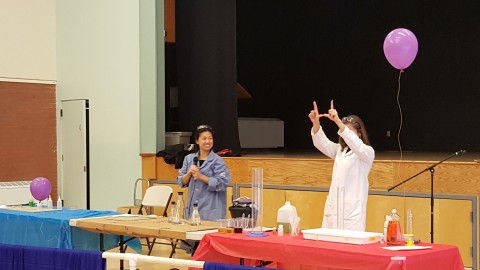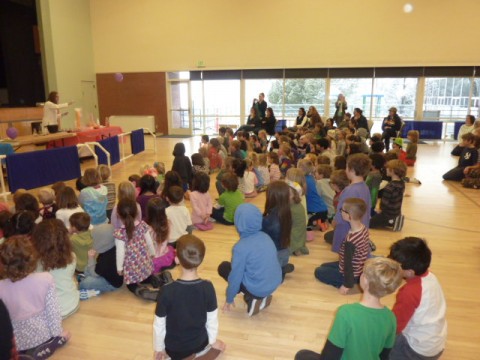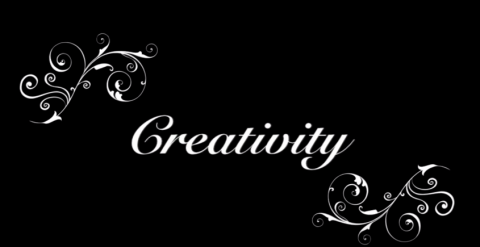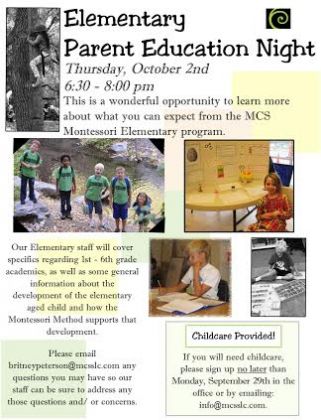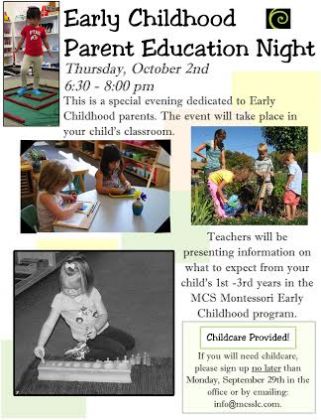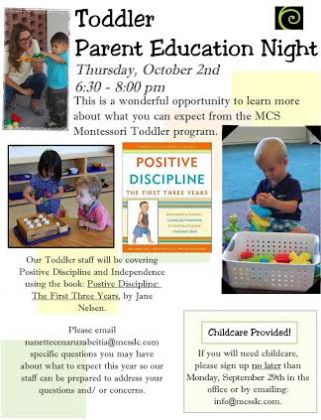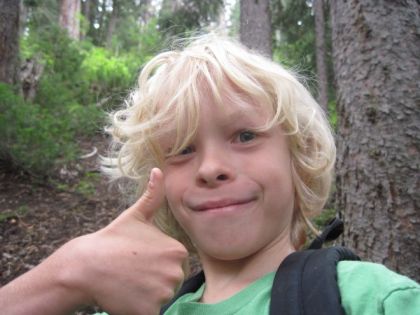The Montessori math curriculum is quite unlike the traditional approach that each of us experienced. It is based on developing a strong foundation through concrete experience and manipulation until the time a child reaches the age of abstraction, typically around nine years old. As they engage in the Cosmic Curriculum, children are given a basis for the interconnectedness of all things and encouraged to engage in the wonder and magic of mathematical concepts. Various activities and materials develop the mathematical mind, preparing the child for their inevitable explosion in to abstraction and connection to the power of relationships.
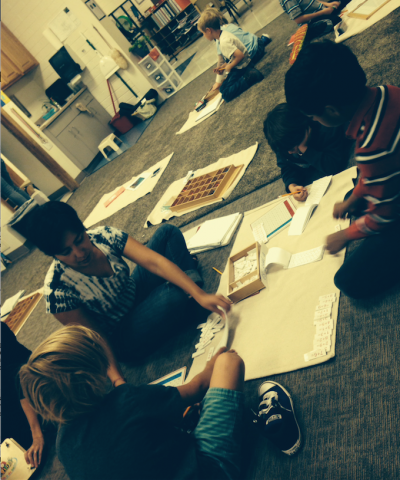
The following was written by Lower Elementary Spanish teacher, Diana Haro Reynolds.
Mathematics is the study of quantity, form, and magnitude. We live among it. It is in the position of the sun and in the shell of a snail. We carry math in our pockets, in our devices. It is what makes our communication possible. We touch and live math, whether we know it or not. It is our responsibility as Montessori guides to help the child discover this framework of mathematical order that makes up our world. This rationale proposes several reasons for teaching math in the Montessori classroom. It will explain the journey the child will take from concrete concepts through to abstraction.
Human beings have a tendency for order. Since the beginning of human origin, math has been used to unlock the mysteries of the world. It began with a man’s need to
keep track of his belongings. Then came early techniques that created the experience
with numbers of counting. After a long time, came comprehension, which led to
improvements and shortcuts. Finally, humankind reached abstraction. This same
process is seen in a child. (Doer, 2012)
Mathematical order leads to a mathematical mind. As the mathematical mind unfolds, it develops capacities such as sensorial interaction among objects, observation
of patterns, and awareness of the physical world, mental classification, abstract thinking, and knowledge of the power of relationships. Math supports understanding by encouraging order, concentration, independence, special relations, patterning, one to one correspondence, combination, difference, and similarity. Additional goals supported by math are predictability, exactness or sense of accurateness, concreteness, logic and reasoning, problem solving, and decision making skills, as well as refinement of the mind and thinking. (Stockton-Moreno, 2015)
Why the need to teach math in a specific Montessori way? There are a lot of aspects that prepare the child for math. These include the prepared environment, giving the child the power of choice. Practical life works build concentration and confidence. The child enjoys practicing a task over and over for the pure pleasure of it. The joy is in the process. This mentality is preparing him for the academic areas. Sensitive periods serve as the specific times in a child’s development where part of their needs include an insatiable thirst for specific tasks. There is a sensitive period for concrete tools of precision. We must capitalize on these sensitive periods. (Stockton-Moreno, 2015)
The aims of Montessori math are to make the child aware that math is a part of her life; to build confidence and prepare the child for life. Confidence comes from the sequential growth in which the materials are presented. It starts with the importance of the Three Period Lesson. The first period being the presentation of the concept. The
second period is where the child practices and shows that which has been presented. In math, this second period is much longer than in other areas of study. This is the time in which the child is practicing, exploring and making discoveries, day in and day out, about the concept presented. The third period is that in which the child shows understanding of the concept through teacher observation or helping someone else.
The main goal of Montessori math is to move the child from concrete to abstraction and helping him form a mathematical mind. In the book, A Way of Learning, Ann Burke Nerbert explains that “the mathematical mind derives from experience” (Stockton-Moreno, 2015). We must not rob the child from forming her mathematical mind. She must have ample time to experience the joy of working with the materials and for understanding and internalizing the processes and concepts. The materials are
multimodal in that they appeal to multiple senses. This aids in the “permanent wiring of the brain that will be available as your child gets older and uses her brain for analytical thinking and problem-solving” (Duffy, 2008). Knowing is not understanding. Montessori math provides the path toward understanding.
According to Michael Doer, the passage towards abstraction is done in four stages. The first is the Concrete stage. This is where the child works purely with the material. No works is shown on paper until the child is nearing the end of this stage. The second stage is Concrete Materials lead to Symbols. This is when the child works with
the materials and records the process in writing. This is the longest stage and requires
that the focus be on the process, not the end result. This is the time in which the child is “internalizing the algorithm” (Doer, 2012). Towards the end of this stage the child may begin to work with charts rather than manipulatives. The third stage is often overlooked perhaps because it is the shortest. This is the stage when Symbols connect to Concrete Material. Essentially it is the reversal of stage two. The child does the work on paper then uses the materials to check their answer. The Symbolic stage is the fourth and final stage. This is where the emphasis is on showing the written work. (Doer, 2012)
Doer also emphasizes mental calculations and mental carrying as the two key elements in reaching abstraction. Mental calculation or memorization requires that the
child know math facts with accuracy and speed. The child should take no longer than
three second to recall a fact, otherwise, memorization has not been reached and the
child is calculating. Accuracy should be no less than 98%. It should be recall only. The
second key, mental carrying, requires that the child be able to keep track of the carrying without making a mark on paper. Having the child work on other forms of memorization, such as poems or definitions, will greatly help achieve this goal.
Math is part of our society. We need it in order to function. But there is also a math phobia. Math in Montessori makes it more than accessible, it makes it real. Whenever possible, real life problems should be presented to the child so as to give her
the context for these new skills. Among with word problems, research in the area of
math is a great way to expose the child to the practicality of math. We must cultivate a love and understanding of mathematics in our children by proving the keys and allowing them to make their own discoveries.
Diana Haro Reynolds – Lower Elementary Teacher/Intern
References
Doer, M. (2012). Numbers: Montessori arithmetic for lower elementary.
Duffy, M. (2008). Math works: Montessori math and the developing brain. Hollidaysburg,
PA: Parent Child Press.
Stockton-Moreno, L. (2015). MONT. 633*01, week 1 notes [PowerPoint slides].




